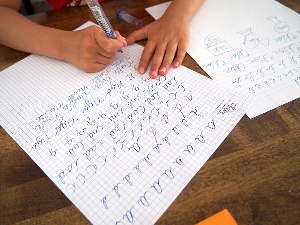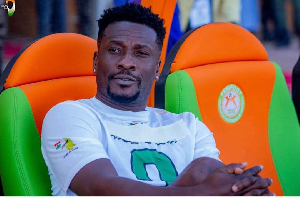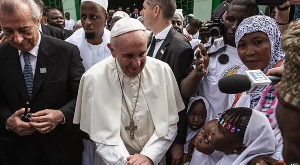Students the world over learn better when they are able to relate concepts and thoughts to their own environs. Largely, this has eluded Africa overtime with teaching methods drawing examples from the West.
Recent trends, however, show gradual drifts with African academics inventing home-grown strategies (indigenous knowledge systems) to ensure effective teaching and learning; drawing from the African context.
At the forefront of this revolution is Professor Peter Akinsola Okebukola of the Lagos State University whose educational invention largely emphasizes the culture, available technology, and conceptual approach to learning.
Coined the CTCA, his five-step theory suggests that:
Teachers inform the students ahead of time of the topic to be learnt in class. Ask each student to search the topic through the internet, watch relevant videos and find out through discussion with family, friends, and relatives the indigenous knowledge relating to the topic to be learnt.
At the start of the lesson and after the introduction by the teacher, students be assigned into groups of mixed abilities and mixed-sex to share individual reflections and discuss what they have learnt. A group leader is assigned to document and present these reflections made by the groups as the spokesperson of the group in 8 minutes in class.
The teacher progresses the lesson, drawing practical examples from the immediate surroundings of the school and indigenous knowledge planned by the teacher. Such examples can be physically observed by the students to make the learning of concept real and concrete and permanent.
As the lesson progresses, the class is reminded of the relevance of the indigenous knowledge/practices to the lesson for a meaningful understanding of the concept. Misunderstanding/misconception arising from indigenous knowledge should be carefully cleared.
At the close of the lesson, the teacher sends a maximum 320-character summary of the lesson via SMS to the group leader as he or she also sends it to other group members.
His theory has witnessed some successes amidst implementation in a number of research at the graduate and postgraduate levels. This paper looks at how favourable his work compares to previous inventions related to the cultural, technologic and conceptual factors. The works of two previous inventors come in handy.
Okebukola Vygotsky and Ausubel – the converging points
Ausubel’s theory of advanced organizers is a cognitive instructional strategy used to promote the learning and retention of new information. It is information that is presented before learning and that can be used by the learner to organize and interpret new incoming information (Mayer 2003).
Ausubel contends that the organizing ideas, which may be single concepts or statements of relationship, are themselves important contents and should be taught because they serve to organize everything that follows. Advanced organizers are based on major concepts such as generalization, principles, and laws of academic disciplines.
Ausubel suggests that advanced organizers might be used to foster meaningful learning by prompting the students regarding pre-existing superordinate concepts that are already in the student’s cognitive structure and otherwise by providing a context of general concepts into which the student can incorporate progressively differentiated details.
Ausubel claims that by presenting a global representation of the knowledge to be learnt, advanced organizers might foster ‘integrative reconciliation’ of the subdomains of knowledge i.e. the ability to understand the interconnections among the basic concept in the domain. According to Joyce et al. (2000), the advanced organizers model has three phases of activity which are:
1. Presentation of the advanced organizer relevant to knowledge.
2. Making links to/ from the advanced organizer in an organized and logical order of learning material explicit.
3. Strengthening the cognitive organization through integrative reconciliation and active reception learning (e.g. the teacher can ask learners to make a summary, to point out differences, to relate new examples with the organizers) and elicit critical approach to the subject matter (have students think about contradictions or implicit inferences in the learning material or previous knowledge).
These opinions of Joyce etal on the Ausubels advance organisers resonates with the principles of the CTCA. For instance, presentation of the advanced organizer relevant to knowledge is akin to step 1 of CTCA where teacher informs the students ahead of time of the topic to be learnt in class and asks each student to search the topic through the internet, watch relevant videos and find out through discussion with family, friends, and relatives the indigenous knowledge relating to the topic to be learnt.
Also, the second step of Joyce etal on Ausubels theory of advance organiser is making links to/ from the advanced organizer in an organized and logical order of learning material explicit.
This is reflective of the third step of CTCA where the teacher progresses the lesson, drawing practical examples from the immediate surroundings of the school and indigenous knowledge planned by the teacher.
The final feature of Ausubels advance organiser as espoused by Joyce etal is the need to strengthen the cognitive organization through integrative reconciliation and active reception learning (e.g.the teacher can ask learners to make a summary, to point out differences, to relate new examples with the organizers) and elicit critical approach to the subject matter.
This further reflects step 4 of the CTCA where, as the lesson progresses, the class is reminded of the relevance of the indigenous knowledge/practices to the lesson for a meaningful understanding of the concept and misunderstanding/misconception arising from indigenous knowledge carefully cleared.
Vygotsky’s theory of social constructivism emphasizes the social contexts of learning and the fact that knowledge is mutually built and constructed. It also emphasizes the benefits of collaboration in group work and with a more skilled tutor, an individual will facilitate the transition from learners, the zone of proximal development to new levels of skills and competences.
According to him, Zone of Proximal Development (ZPD) is the range of tasks that are too difficult for children to master alone but can be learned with guidance and assistance from adults or more skilled children working independently.
His opinion of ZPD resonates with the CTCA in stage 1, where students are expected to learn with indigenous concepts from parents, relatives, cousins and other to gain insights into indigenous knowledge systems related with topics they are to discuss in school.
Vygotsky (1962) also emphasized that in the practical class the science teacher is expected to sensitize learners to their environment, develop critical thinking, encourage creative thinking and encourage exploration that will enhance self-directed and cooperative learning amongst the learners. This is reflective of the contextual part of the CTCA which places emphasis on the learning environment.
Further, Vygotsky’s theory encourages social learning and recognizes that learning involving group work could improve students' academic achievement; reflecting step 2 of CTCA which involves putting students in a group of mixed abilities and sex.
Conclusion
Whiles borrowing from other jurisdictions, it is important to start inventing and implanting African teaching models that reflect the culture, available technology and the environment of the African to aid understanding of concepts traditionally considered difficult by African students.
Opinions of Monday, 13 July 2020
Columnist: Awaah Fred















